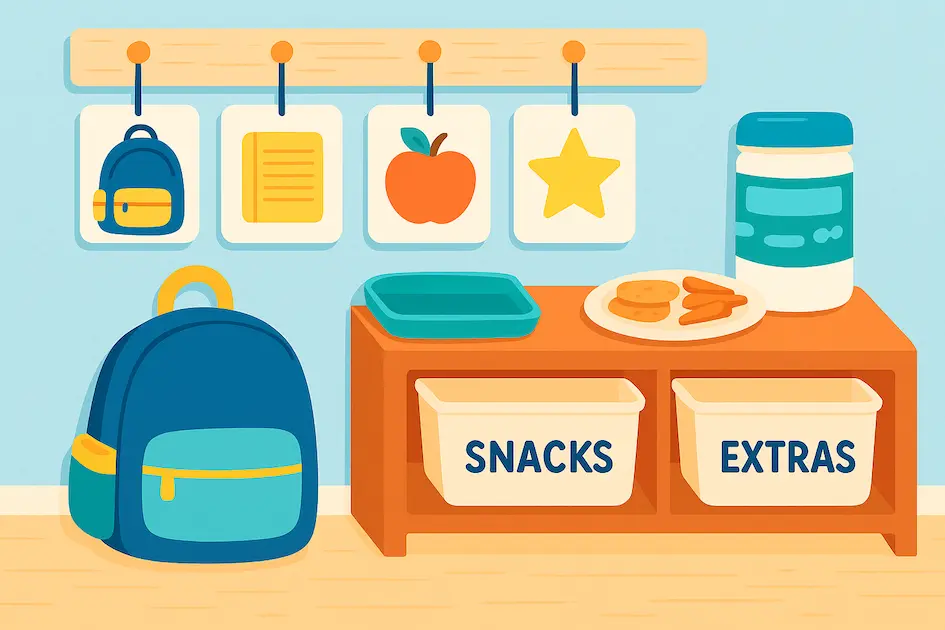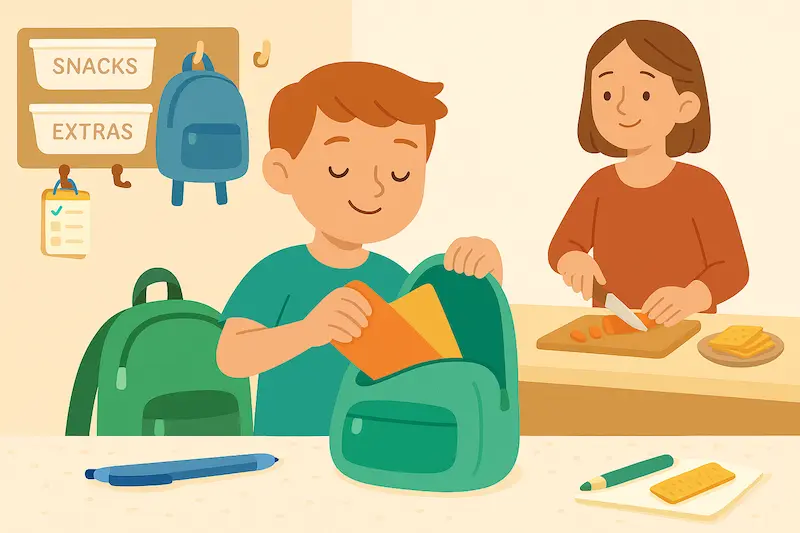How to Tame the After-School Chaos
The moment kids walk in the door after school, things can get loud — fast. Backpacks drop, snacks are demanded, energy runs high (or crashes completely), and parents are left juggling homework, dinner, and everyone’s emotional ups and downs. Sound familiar? You’re not alone. The good news: with a few small shifts, you can tame the after-school chaos and create a smoother, calmer transition from school to home.

What We’ll Cover
- Common causes of after-school overwhelm
- How to build a simple after-school routine
- Ways to manage homework, snacks, and downtime
- Tips to organize backpacks and papers without nagging
Why After-School Hours Feel So Hard
Think of the school day as a full-time job for your child. They’ve followed rules, stayed focused, and navigated social dynamics for hours. By the time they get home, their tanks are low. Add in your own end-of-day fatigue, and it’s easy to see how minor things turn into meltdowns. That’s why having a plan matters — even a simple one.
Step 1: Create a Landing Zone
The first five minutes home can make or break the afternoon. Set up a consistent spot for your child to unpack their backpack, hang their coat, and drop off papers. This doesn’t have to be fancy — a hook, bin, or small shelf by the door works just fine.
Need ideas? Our article on how to organize school papers at home offers practical ways to manage daily handouts, artwork, and reminders without creating piles.
Step 2: Build a Predictable After-School Routine
Just like a morning routine helps start the day, a simple after-school flow helps end it on a calmer note. Here’s a basic template you can tweak:
- Unpack and put away items
- Snack time
- Free play or downtime
- Homework or reading
- Chores or help with dinner (if age-appropriate)
Post it on the fridge or use a visual schedule to help younger kids follow the rhythm without constant reminders.
Step 3: Tackle Homework Without the Drama
Set a consistent time for homework — not immediately after walking in the door, but not too late either. Some kids need to burn off energy first, while others prefer to get it done and move on. A dedicated homework station or portable caddy can make this process smoother and more independent.
Quick Tip: Set a 10-minute timer to help reluctant kids “just get started.” Often, the hardest part is beginning.
Step 4: Plan for the Post-School Mood
Not every child walks through the door ready to talk about their day. Some need quiet time, others need movement, and some need a hug and a snack. Try offering “recharge” choices after school:
- Read quietly for 15 minutes
- Jump on the trampoline or go for a walk
- Listen to music or draw
Respecting your child’s emotional bandwidth goes a long way toward reducing after-school power struggles.
Step 5: Prep for Tomorrow, Tonight
Once the afternoon rush winds down, do a quick reset before bedtime. Repack the backpack, sign any papers, and place everything by the door. Bonus points if your child can help check off a visual list or handle their own prep independently.
Pair this with an age-appropriate chore (like emptying their lunchbox or choosing clothes) to build ownership and confidence.
Step 6: Keep Snacks Simple and Satisfying
A good snack can be the reset button for an after-school meltdown. Try options with a mix of carbs and protein:

- Apple slices + peanut butter
- Cheese stick + whole grain crackers
- Yogurt + granola
- Pita + hummus
Batch-prep snacks on Sunday or set up a self-serve snack drawer to make afternoons easier. Want to streamline the lunch-packing process too? Check out our guide on how to pack a stress-free school lunch.
Final Thoughts: Structure Brings Calm
There’s no way to eliminate all the noise and motion of after-school time — but you can shape it into something more manageable. When you tame the after-school chaos with consistent routines, cozy recharge time, and kid-friendly systems, everyone wins. Start small, stay flexible, and keep the big picture in mind: connection, calm, and a reset before the evening begins.
Need help creating smoother transitions? Browse our guides to building a calm morning routine or setting up a homework caddy that supports focus later in the day.
